Steph W. from SEOPressor


...help you check your website and tell you exactly how to rank higher?


81
score %
SEO Score

Found us from search engine?
We rank high, you can too.
SEOPressor helps you to optimize your on-page SEO for higher & improved search ranking.
By allysa on October 4, 2015
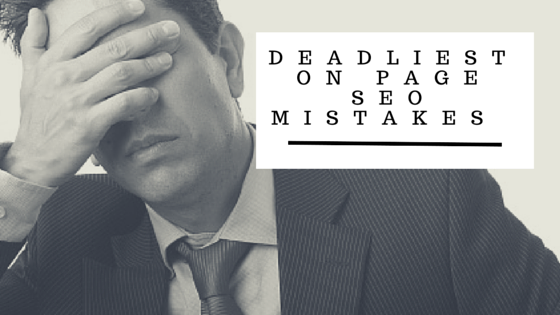
This article aims to point out you with on-page SEO mistakes – the aspect of SEO focused on the pages you create, not the links from other areas or how many clicks you’re getting.
This is by far the easiest part of SEO to control, and by checking each page you make for these elements, you’ll be setting yourself up for the best initial results. These are the basic you should know about:
Keywords remain the core of search engine optimization – after all, they’re still one of the major things that users are searching for.
Now, keep in mind that keywords aren’t the only thing people can search for anymore – depending on the context of the question, they may be looking for something very different. For on-page SEO, however, these remain both relevant and valuable. Make sure you consider the following:
I am going to let you in on a secret – there’s no magic keyword density you should aim for. That’s right – there’s no range or the exact number of keyword density you should be trying to achieve.
This may have been true back when search engines were simpler, but we’re a long time from the 90′s.
However, that’s not to say that density isn’t relevant. Most guides recommend that you try to achieve a density of 0.5% to 1.5% on each page.
This tends to be a natural rate of use for most phrases, and natural use of keywords is generally the best option. When in doubt, err on the side of a lower density – the last thing you want to do is get hit with a penalty for keyword stuffing.
Some pages find it hard to achieve even a minimal 0.5% keyword density, particularly on 1000+ word articles, and resort to pushing in the keyword wherever it seems like it will fit.
Working it in naturally is best, and if you don’t have a high density, then just don’t worry.
In the old days of SEO, I used to think keyword stuffing is great for improving the density – because it worked. That’s no longer true, though, and Google’s algorithm has changed. Google slapped down countless sites that didn’t change their ways.
These days, we believe that readability is more important because it improves the user experience. We completely redid all content with stuffed keywords – and now we’re more successful than ever before.
However, putting a few keywords in your content is also important. It does not mean neglecting keywords all together, as long as it does not affect readability and you do not over optimize it.
For Example:
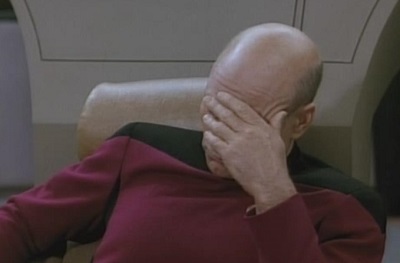
This does not look natural at all
I would say keyword density is not very impactful on Google ranking factor, but Keyword density is a metric that enables Google to understand your content gradually rather than as an immediate ranking factor.
But at the end of the day, there is no point writing content that’s able to rank on the 1st page but which is unreadable. I believe you also agree with me on this.
[Tweet “Stuffing KW to increase KW density, is just going to make your reader cringe Here is why”]
LSI – or Latent Semantic Index – is a measure of related keywords. LSI is another way to boost up your keyword density. Pages that have more LSI keywords without spamming them tend to rank better than those that don’t have these keywords.
Fortunately, many tools like LSIgraph exist to help you uncover existing LSI keywords and figure out ways of integrating them onto each page.
Try to ensure each page you write has relevant LSI keywords, and don’t be afraid to go back and edit older pages now and then. These Tools are great but do not overuse LSI keywords in any content because your content is unable to serve two search intents.
First of all, it confuses the search engine. Inserting unrelated LSI keywords in the middle of your content can also make the readers puzzled at best, or lost and disinterested at worst. Readers can feel those keywords are not supposed to be there.
This reminds me about a study on co-occurrence analysis from Eric Enge.

Co-Occurrence Analysis Relevant keywords against Google Position Credit: Eric Enge
According to his study, there is a correlation between Relevant keywords and Google Position. Therefore, if you have a list of right keywords, you are able to rank better. Different queries have different sets of keyword requirements.
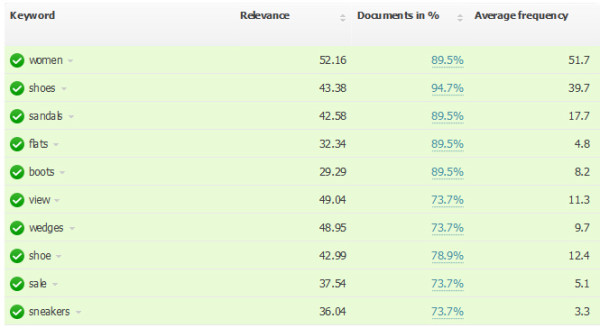
Relevant keywords from top 10
For example: If you try to rank for the keyword “women shoes”, you need the keywords shown above [picture above] to have a better chance to rank. Furthermore, a page with a set of unnaturally mixed keywords may be judged to be of lower quality. Hence Google will rank the page lower.
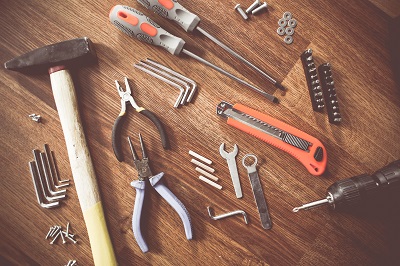
Search engines can and do measure the technical aspect of each page when deciding how to rank them. Essentially, certain things are seen as producing better webpages for readers, and search engines actively reward this.
After all, they want their users to be satisfied with the results they get, so it’s in their best interests to encourage high-quality content.
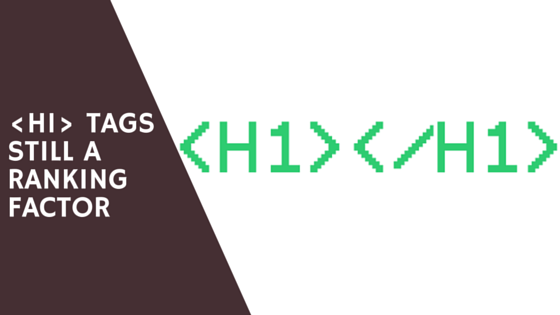
H1 – such as the one just above – help to quickly and easily sort content. Simply by looking at the different sizes of text, readers can find material that’s most relevant to their interests.
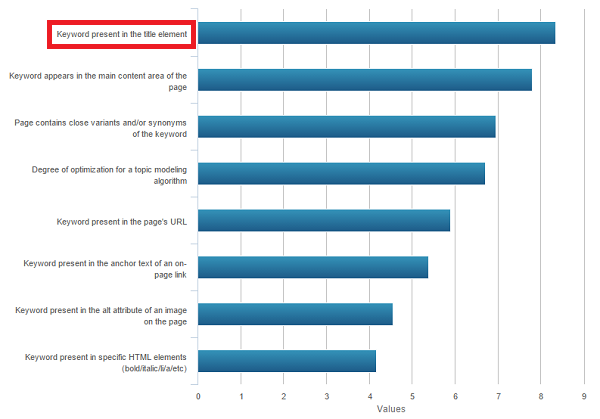
Moz survey also proves that H1 is still very important. It is a high influencer on Search engine [Source]
These natural breaks also help to refocus the reader’s attention – another point which this article to SEO isn’t delving too deeply into, but that remains relevant for what we’re doing.
In most cases, H1 tags are good for major sections, H2 tags are good for subsections, and H3 tags only come into play for additional subsections in particularly long documents.
Meta tags are a collection of coding descriptions that help search engines understand what a given page is about. It’s worth noting that not all of them are valuable – the Meta Keywords Attribute tag, for example, is functionally useless because Google now ignores it.
However, meta tags also help you decide what gets displayed in search engines – including the title – and provides information on what search engine crawlers should do with a given page.
The Meta Title tag is a bit simpler – it’s the title that displays in search engines and at the top of each page, and you want to include these to improve the overall look of the page.
Although Google did not crawl title tags, title tags are important for increasing click through rate. Optimizing your title tag with a catchy headline will help you to increase click through rate. The most challenging part of your title tag is to be within 50-60 character
While Meta Descriptions are a special type of meta tag, they’re important enough to require their own description.
The Meta Description is the text that appears under the title in search engine results, and it’s one of the main ways that users decide on which sites to visit. As our previous case study shows, although Google did not use meta descriptions to rank, it helps to increase your click through rate in the Search engine result pages.

The “alt” data for an image specifies some text to display if the image itself can’t be seen. This is a great place to put a keyword, since doing so helps search engines understand that a given image is truly relevant to the content shown on the rest of the page.
Every single picture on your site should have its alt information filled out – this may take some time to do, but the end result will be a measurable improvement in your on-page SEO.
Incidentally, if you have to add keywords anywhere at all, you can do so in the image alts – readers don’t see this, so it doesn’t impact readability. It’s still best to get the keyword inserted in a natural way, though.
![]()
Search engines are smart, but they’re still software being run on computers and cannot interpret pages in the same way humans can. In fact, what looks good for humans is often meaningless to machines – and that’s where structured data comes into play.
Essentially, structured data is a way of providing information in a standardized format that’s easy for search engines to understand. Meta descriptions are one type of structured data, as are Page Maps and Microdata.
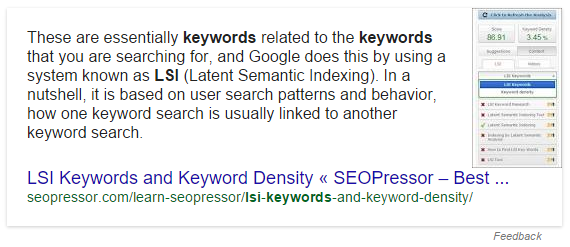
Knowledge Graph can also be structured to support context-based queries. Google’s Knowledge graph is a relatively recent tool designed to help figure out what users are really asking and provide richer content to users.
If you’ve seen a call-out box on the side of search results lately, that’s the Knowledge graph in action. And here how you can get Google Knowledge Graph
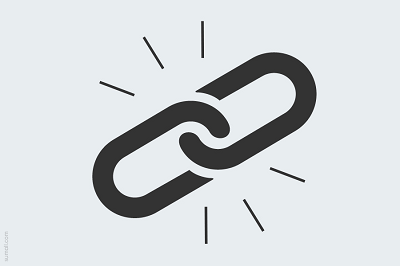
Most websites want to have links – after all, clicking on things to go somewhere new is one of the founding principles of web design! There are two types of links associated with on-page SEO – the third type, inbound links from other sites, is not related to what you’re doing right now.
Internal links go to somewhere else on your site – it may be a product page, a blog entry, or a guide of some sort. Internal links also cover navigation to the rest of your site, such as header and footer bars.
Generally speaking, you want to make sure every webpage is somehow linked to the others – because it doesn’t matter how good your on-page SEO is if search engines can’t find the page – but you should try to avoid excessive linking.
That’s not the only consideration, though – each landing page offers a degree of value to your site, and you can leverage this by using links and focusing all of that value towards a small number of product pages.
Try drawing out a map of your site’s links (or use some software to do it) and figure out where the links are, then how you can rearrange them.
External links should be used carefully. You want to use them when it’s sensible to do so – such as our link to Google’s page on Structured Data up above – but it’s important to understand that the more external links you have, the more of your website’s power and authority is given to others.
You can mitigate this with the use of a “nofollow” link, which specifically tells search engines to not let that link influence rankings, but it’s still good practice to avoid having too many external links. In most cases, 2-4 external links on a given page is all you need.

Content isn’t just keywords, and search engines will judge pages in a holistic way to determine who valuable it really is.

Authorship is dead. But author rank is not. By having an obvious public author rank, it’s entirely possible to start building an audience based around you as a person, rather than simply uploading content into a blog.
A bigger base of readers means more social shares encouraging others to come in, and when you have a lot of people coming to read your content, you’ll start making your way up the search results page.
Blogs are not “write and forget” content – establishing author rank is one thing that can help you promote the content once it’s up. Google used Authors tag in personalized search.
Google will still display author’s photos in Google Search results that had been shared on Google plus, and whom are in your Google contacts, when you are searching for the author name.
This also means that Google will still use author photo when you are searching for your friend in Google search result, and Google will suggest your friend post to you.
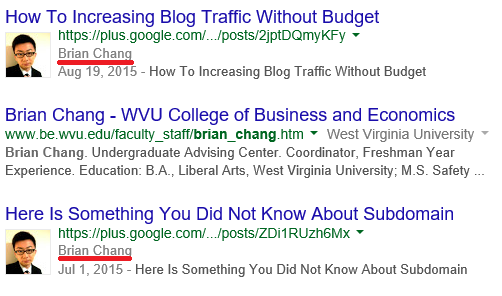
My previous case study shows that if you are doing some nasty stuff in just one of your content, the next thing you know is that all your content with the same author’s ranking will fall together. This proves that Google cares about who is writing the content. Matt Cutts also mentioned about this before:
For more proof, Moz also did a survey in 2015 which mentions that “domains associated with high authority authors can be ranked higher”. The key takeaway here was the authority.
That means that if you are an authority in a niche, then you have a definite high chance to rank higher. Here is a type of content that you can develop to build authority.
A on page SEO mistake is not knowing that there is a difference between content. There are differences in the content freshness and evergreen content. If you have ever wondered why your post gets ranked high, receiving tons of traffic initially, but then it falls, sometimes dramatically, later on, then there are two possibilities:
Freshness – how recent and timely the content is – only applies to some pages, and it’s a special value used for particular types of queries.
If you’re talking about something recent and important (such as a major development in your industry), you want to write a post with that theme in mind and focus on the news-seeking audience.
Therefore, you need to plan your content strategy well before you create content. If you are planning on writing fresh content, then you need to be prepared to write content regularly and in a timely manner to maintain or increase the amount of traffic flow into your website. Ranking in fresh queries is easy, but the rankings don’t last forever.

OMG, my eyes hurt when I am reading your content
Content needs to be readable – this means having good font sizes and formats, paragraphs that aren’t too long, good contrast in colors, and plenty of white space. If you have a lot of tiny texts crammed into a small space, that’s not readable.
Now, one other thing to keep in mind is that a lot of people don’t read every single word on a given page – visitors quickly scan the page, hoping to come across important information, and that’s why good content structure is so important.
If they’re going to miss most of the content anyway, then you should make the key points as likely to be read as possible.
This is important for the whole user experience. There is no point creating unreadable good content. It is like a hamburger: the bread is not the most important ingredient, but without the bread it is not a hamburger anymore. You also want to avoid Google Pogosticking.

The algorithm described it as a process whereby a searcher clicks into a result, then clicks the back button, and repeats the same thing again with other search results. One primary reason why users do pogosticking is that the content is unreadable. Nowadays, users are easily turned off and they will switch out.
If you read posts by entrepreneurs, a lot of them end up sounding the same – because they are. They’re giving the same advice as all of the others, and while it may be good advice – they are, after all, successful – it’s not going to help them stick out from the crowd or to get noticed.
If people are bored with your content, they won’t talk about what you have to say or share it with others – and no social signals, like no shares on Facebook or Twitter, is bad SEO.
That is why, you should focus on unique content that other people aren’t talking about.
They are more likely to be shared – and to be noticed. The most common reason unique content fail is because the content isn’t promoted sufficiently by the authors. We should spend more time on promoting content rather than waiting passively for someone to share our content.
And then you have another group of people who just keep churning out more and more content irrespective of quality or value. I think it’s better to stop creating meaningless content. If it doesn’t have value, nobody cares about reading it. How do I know? Because I am a reader.

I used to read a lot of stuff on places like entrepreneur.com until I recognized that a lot of the articles used stock photos and the like for their features pictures.
That’s not very good for such a big site to be doing this. And I don’t want you to be surprised by this, but at least 80% of the advice they give is either not actionable, not valuable, or something we already knew. No offense, I just do not want to read the same thing over and over again
It was so time-consuming to read every article, looking for the good stuff. Eventually, I unsubscribed from them and started following my friend Jessica. Why?
See, I trust Jessica because I know she only shares good content from entrepreneurs – and why I get mad at myself if I’m not sharing stuff that’s truly worth reading. That is why it is are not just enough to only write unique content, you also need an influencer like “Jessica” to help you to promote your contents.
Basically, content has reached the point where we know that what gets shared is what’s really worthwhile – so don’t create content that you wouldn’t read and share yourself.
This is why unique content with content promotion is so important – it’s the key to standing out from the crowd.
Now, trying to undo all of these things can seem intimidating. Just make a checklist of all the things you need to do on each page and make sure everything gets done – as you continue to do this, each part will develop into a habit, and before long you’ll be churning out high-quality web pages without any trouble at all. Trust me, it really is easier than it looks once you get used to it.
Related posts:
Updated: 29 June 2025


Save thousands of dollars (it’s 100x cheaper)

Zero risk of Google penalty (it’s Google-approved)

Boost your rankings (proven by case studies)
Rank High With This Link Strategy
Precise, Simplified, Fast Internal Linking.
